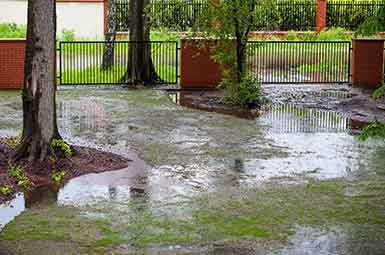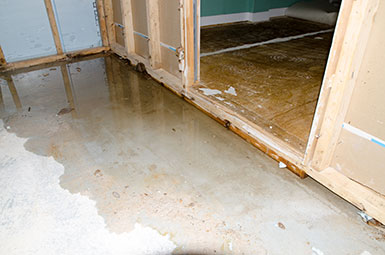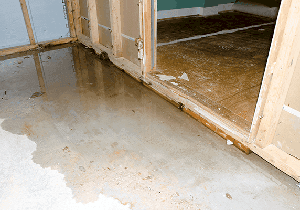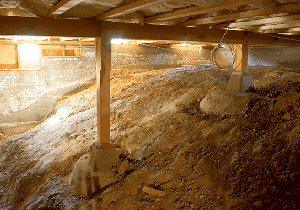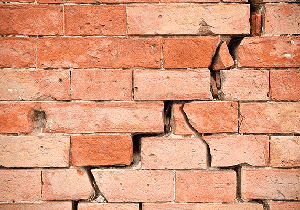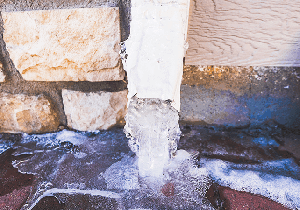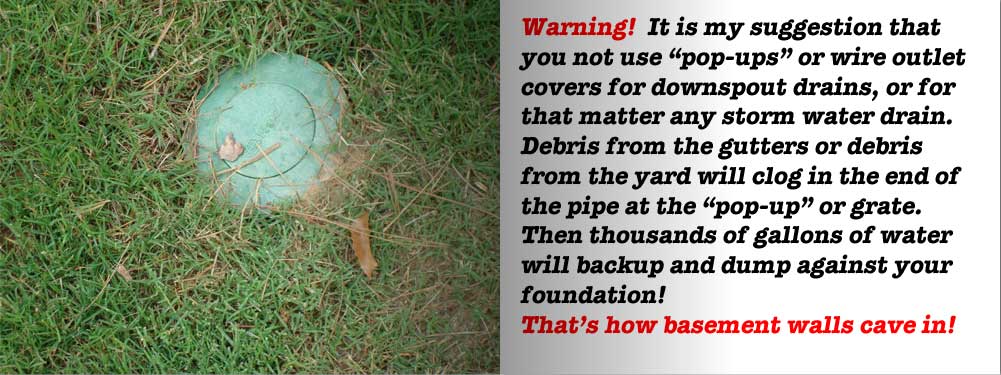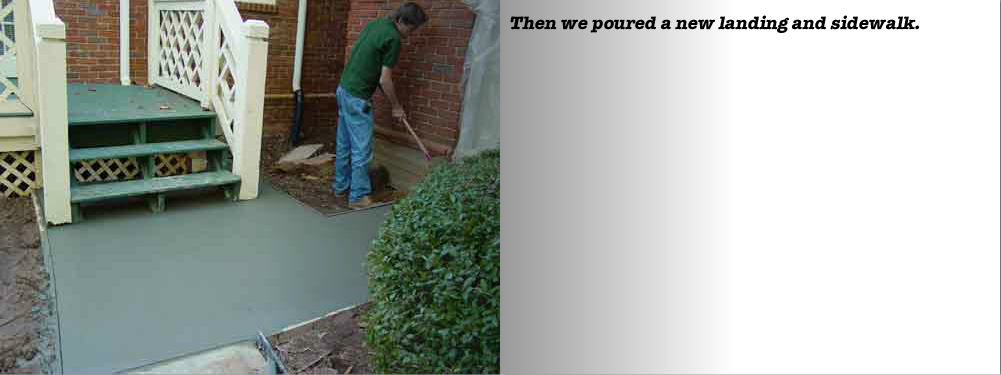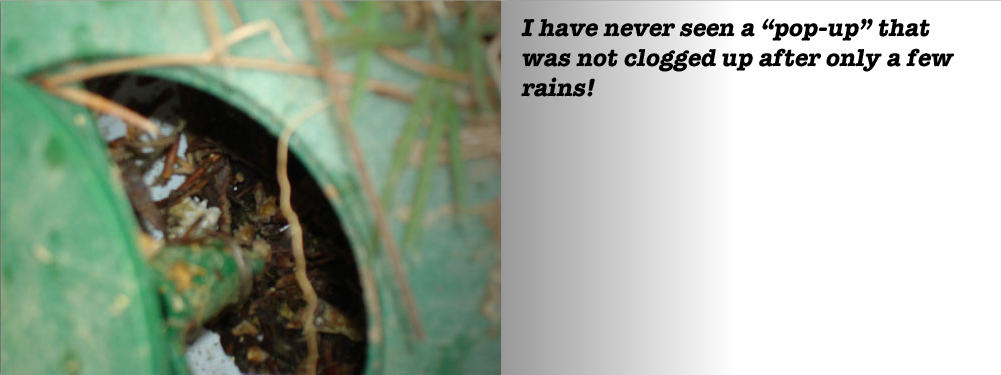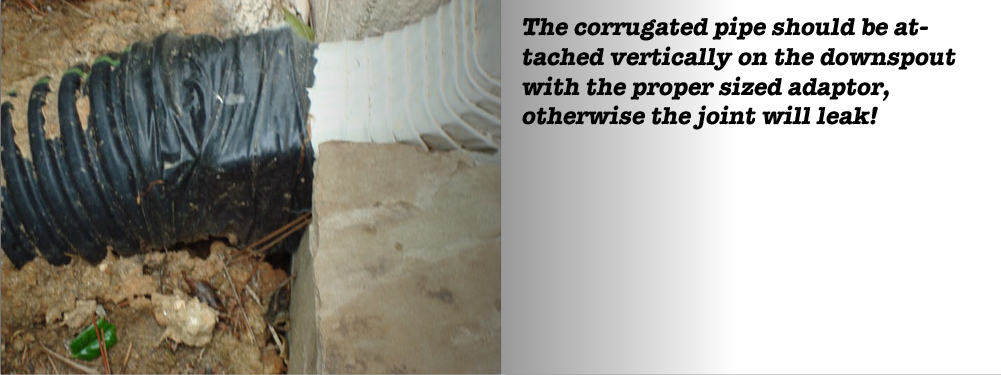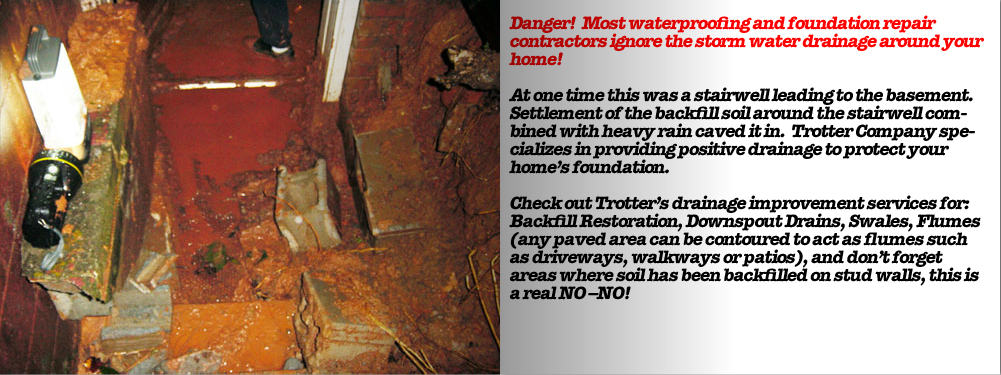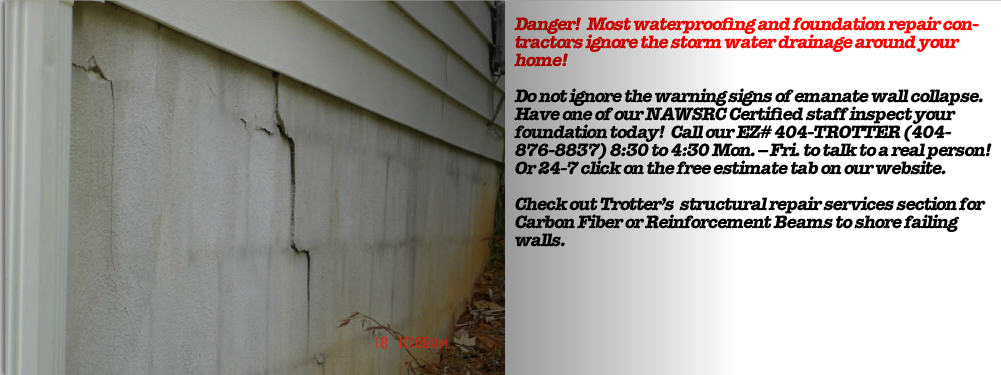Atlanta Drainage Services
Trust The Experts…Trotter offers Lifetime Warranties since 1929!
Basement Waterproofing * Crawlspace Waterproofing* Structural Repair * Drainage
Foundation Drainage Systems Repair
Foundation Drainage System Issues? Trust the Experts!
Poor drainage can destroy your home! It is very important that water can flow away from your structure. If storm water is allowed to pool near your foundation, you are asking for a wet basement and the possibility of a basement wall collapse. For the closest foundation drainage system companies near me, be sure to contact Trotter Atlanta.
Trotter Company installs all types of drainage:
downspout drains
catch basins
channel drains
grass swales
concrete flumes
and more!
We can install all sizes of drains from 4 inches to 48 inches in diameter.
For permanent solutions from qualified drainage companies near me, contact Trotter Company. Trotter Atlanta stands out among drainage companies in Atlanta, offering expert solutions to address water intrusion and moisture issues in basements. As one of the leading drainage companies in Atlanta, Trotter provides tailored and effective drainage systems, ensuring comprehensive protection for your property against water damage. We offer foundation drainage systems repair quotes in Georgia, including areas like Marietta, Atlanta, Decatur, and nearby.
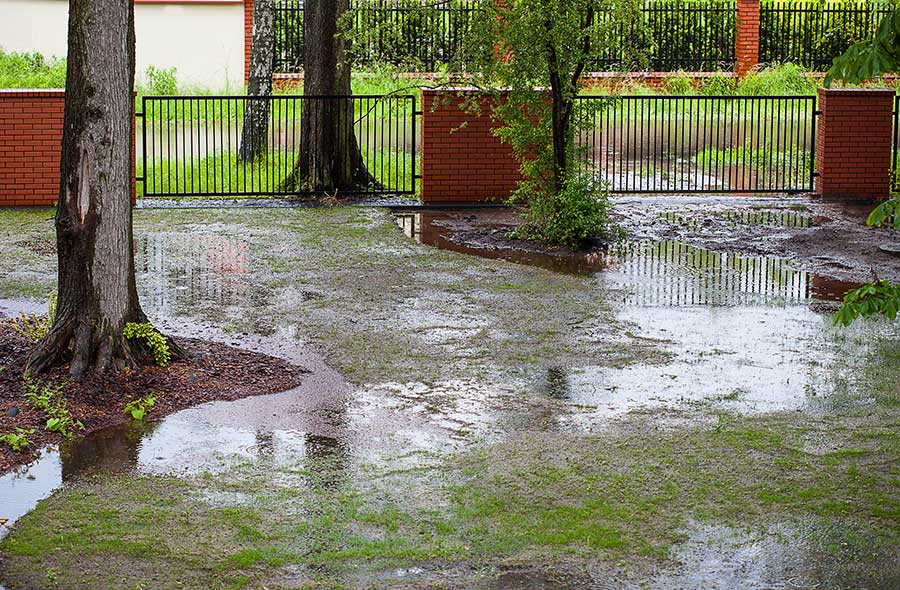
Standing Water
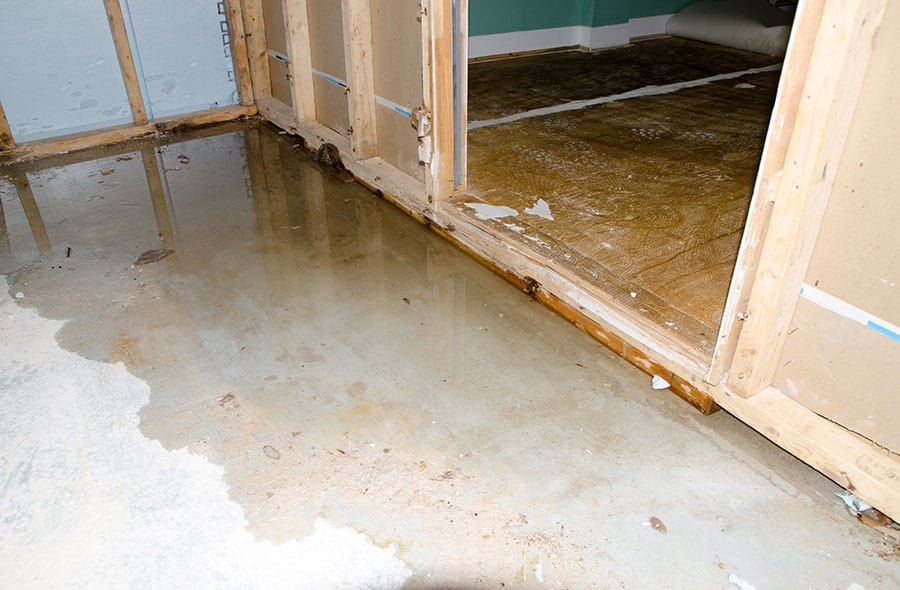
Water In Basement
Trotter has solutions.
- Downspout Drains
- Channel Drains
- Catch Basins
- Gravity Drains
- Swales
- Concrete Flumes
- Backfill Restoration
- Backfill on Stud Walls
Learn More
These drains come in various sizes from two inches to twelve inches and even larger.
Learn More
The area around the catch basin must be contoured to direct the water into the catch basin.
Learn More
Many times we are able to install the smaller drains and customers can’t tell that we worked in their yard! We do very neat work.
Learn More
If you have thick sod, we can usually cut the sod and replace it, and you will never know we were there, other than now the water runs away from your home rather than toward it.
Learn More
Many times we will configure the flumes to work as a sidewalk and most people never realize they are part of the storm water drainage system.
Learn More
As time passes, this soil settles and can trap water against your basement walls. First it may lead to wet basements. Then, the basement walls gradually develop long horizontal cracks, and if ignored, eventually the walls collapse. Backfill settlement is the number one cause of wet basements and caved-in basement walls.
Warning: basement walls CAN collapse!
Learn More
Also, many times the area will continue to be a problem due to seepage from behind the veneer (brick, stucco, stone, etc.) from other areas. In our experience, a much better solution is to lower the grade in the problem area and direct the water away from the foundation.
In some rare cases, due to the neighboring yard’s elevation, the stud wall must be replaced with a masonry wall and then the exterior grade can be safely raised.
Learn More
Want to learn more?
Check out our library of videos to help you understand and diagnose your home of common foundation and leak issues.
Follow us on YouTube for the latest videos, tips, & tricks.
